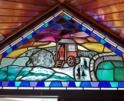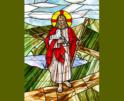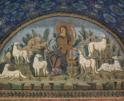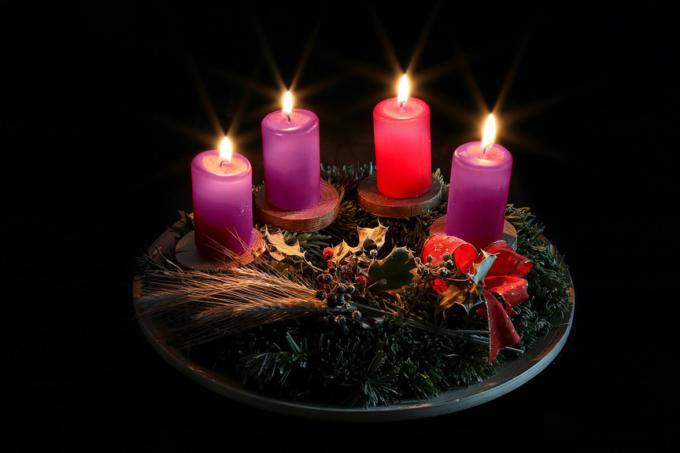
Faith
The great variety of peoples, with their particular customs and traditions, who are the Roman Catholic Church bring the richness of their lives to the Church.
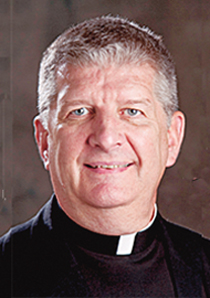
O’Grady
Perhaps the liturgical season that presents the most challenges for us to meet is Advent. The weeks prior to Christmas are filled with activity, shopping, visiting, baking, cooking, and anticipation. The liturgy, its readings and prayers, invite us to slow down, to be silent and listen, and so to be ready for the Lord's arrival.
The observance of an Advent season is a bit later in arrival than its cousin, the Lenten season. That is easily explained by the reality that the annual Easter season and its Lenten preparatory time was pretty much set in place prior to the annual observance of the Nativity of the Lord.
When the Christmas celebrations entered the liturgical life of the Church, the parallel model used was the Lenten and Easter seasons with Advent and Christmas seasons being much abbreviated. The combined Lent and Easter seasons span 90 days, almost a quarter of the year. The Advent-Christmas seasons span a maximum of 43 days, as it does this year. This Advent is the longest possible with 28 days; next Advent (2023), will be the shortest possible with 22 days.
The Advent season is spread over four Sundays and accompanying weekdays. There are two "phases" of this season. The first from the First Sunday of Advent until Dec. 16 inclusive and second from Dec. 17 to Dec. 24, inclusive.
The lectionary readings and the prayers of the Roman Missal of the first phase of Advent bring the combined hopes of Israel for her Messiah and the hopes of each of us for the coming of the Lord into history and at the end of time.
The second phase directs our prayers, hearts, minds, and thoughts to the arrival of the Lord in his birth at Bethlehem -- Christmas. These days are marked by the "O Antiphons" biblically based verses that relate the expectations of Israel to Jesus. Calling to mind the various titles the people of Israel used to praise God, the antiphons apply these to Jesus. Reminding us that he is the expected Messiah, and he is God with us.
The antiphons are familiar to most of us in the Advent hymn "O come, O come, Emmanuel." These verses alone provide us with much "food for thought," or better, a good launch for our Advent prayer and preparation.
The great variety of peoples, with their particular customs and traditions, who are the Roman Catholic Church bring the richness of their lives to the Church. Among them are the familiar Advent wreath, with its evergreens, the four candles (usually three violet and one rose), which signal the four Sundays of Advent. This actually came over to the Roman Catholic Church from a practice of the German Lutherans. The wreaths are evident in our churches and homes and each candle is lighted with an accompanying prayer.
Las Posadas celebrated between Dec. 16 and 24 come with Catholics from Mexico, other Central American, and Caribbean lands. Customs and traditions within the celebration vary between the different nations.
Simbang Gabi in the Philippines is a variation of Las Posadas and not only is it observed in The Philippines but in any community or parish that has a Filipino community.
The present shape of our Advent season developed over time. There were times when it was a full six weeks, beginning in mid-November, complete with Advent fasts and other penitential observances.
The development of Advent would be too much for this column. Those who are interested may want to read "The Liturgical Year, Volume I: Advent, Christmas, Epiphany" by Adrian Nocent, available at www.litpress.org.
While the Church maintains the penitential aspect of Advent, the prevalent spirits are anticipation and preparation. A good preparation for all of us in the midst of the busy-ness of Advent might be a pre-Christmas confession.
Each year, the Federation of Diocesan Liturgical Commissions (FDLC) -- don't let the name scare you -- issues an Advent Christmas Liturgical Guide. It contains a wealth of information and suggestions about the observance of the Advent and Christmas seasons. The Federation serves not only diocesan liturgical commissions, but worship offices, parishes, and individuals. Much of their excellent resource material is readily available from its website, www.fdlc.org.
Another FDLC (you'll be hearing this a lot) resource is its webinar series on the liturgical year: "For Advent and Christmas," available at fdlc.org/2021/04/webinar-advent-and-christmas.
For Advent, take some time, slow down, listen, and get away from the hustle and bustle that marks the time before Christmas.
Recent articles in the Faith & Family section
-
What is the church's position on the treatment of animals?Jenna Marie Cooper
-
Popular devotions and the liturgyFather Robert M. O’Grady
-
The Fight for Our FaithMaureen Crowley Heil
-
The shepherd's voiceScott Hahn
-
Scripture Reflection for April 21, 2024, Fourth Sunday of EasterJem Sullivan



